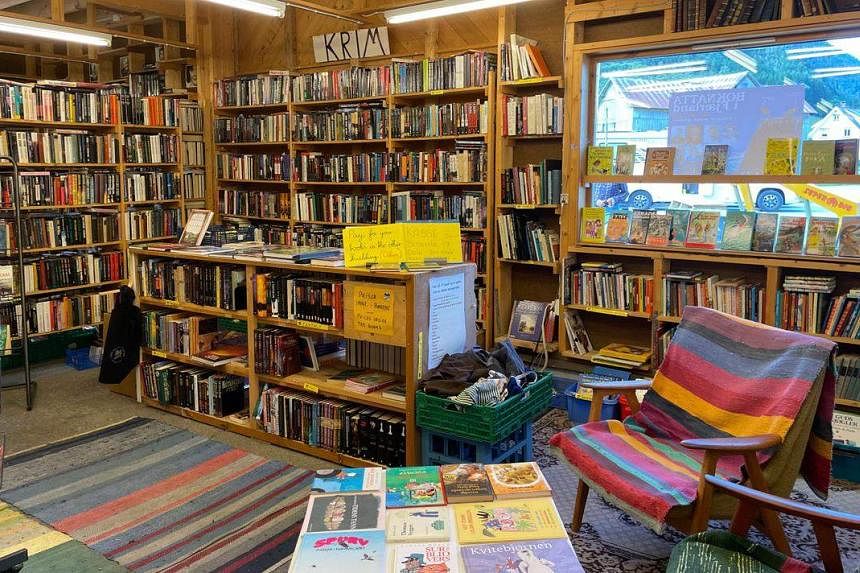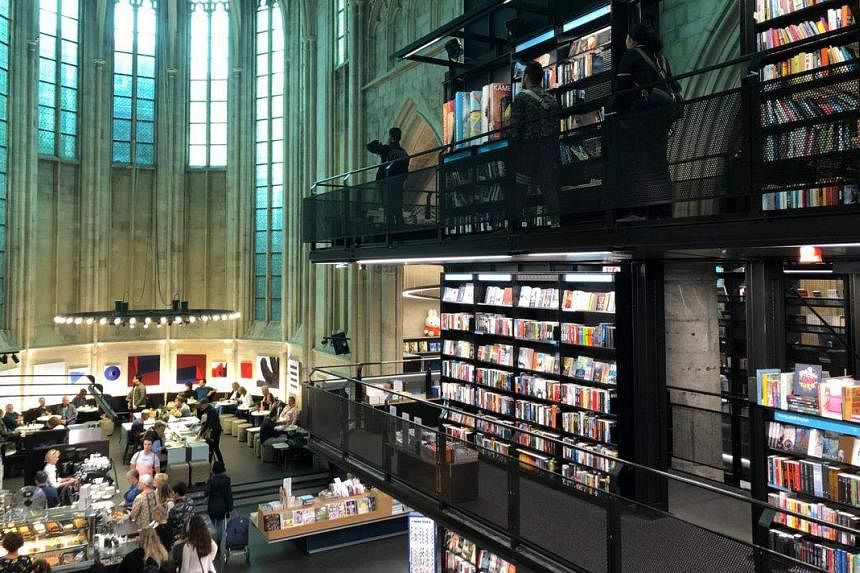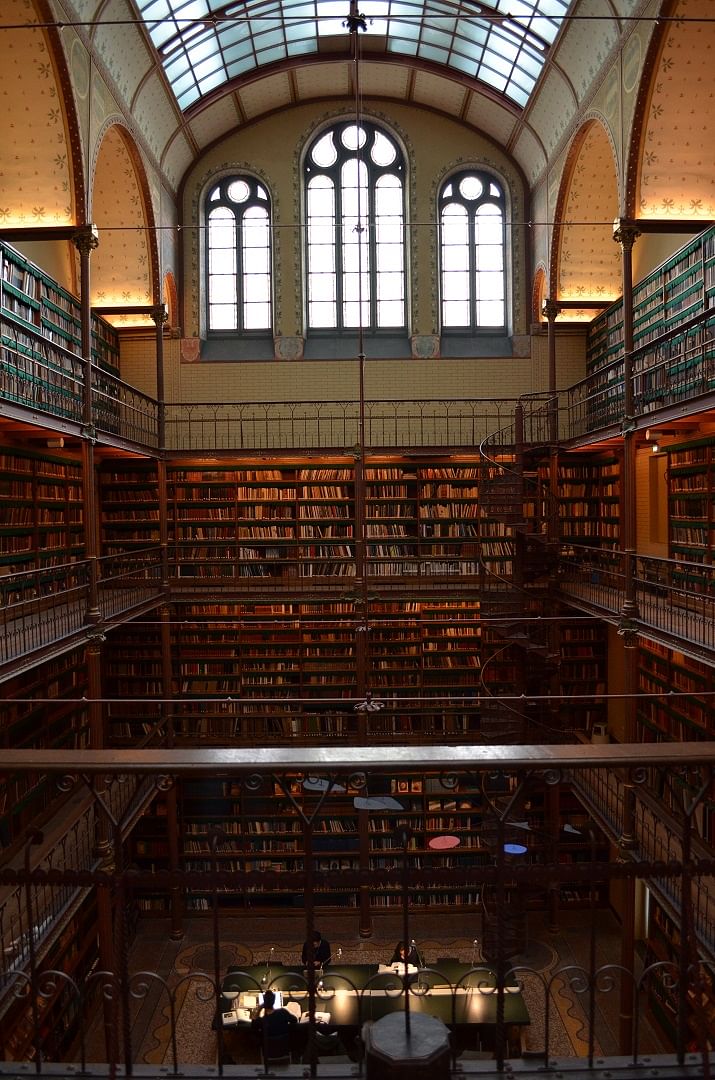Norway already ticks many boxes when it comes to experiences for travellers – the Northern Lights, Unesco World Heritage Site fjords, an incredible outdoor life (fishing, kayaking, hiking, camping) and whale-watching.
Its architectural trove is no less striking, from the modern buildings around the gentrified Oslo harbour to its traditional stave churches to fantastic lookout points over the fjords.
Norwegians are also friendly, good-humoured and attractive hosts. Even their sheep are pretty and daring. Several times, we encountered them taking a rest in the middle of highways, and motorists actually slowed down and waited patiently for the creatures to move aside.
But what really made Norway my new favourite destination is an area called Fjaerland sandwiched between an arm of the Sognefjord and the Jostedalsbreen glacier, the largest in continental Europe.
The centre of this area is Mundal, also officially known as the Norwegian Book Town. Seriously, typing this into Google Maps will throw up its precise location.
It is a one-street settlement with one row of houses, mostly wooden and built along the fjord. The other rows, including a small hotel, are perched on the slopes behind.
This pretty much means that almost every place has a stunning view. On pristine sky-blue days, the fjord mirrors the surrounding glacier and mountains.
So why is it called Book Town? According to Mr Kjell Arne Straumsvag, who runs an antiquarian bookstore on the main strip, book towns are quite a thing in literary parts of the world.
The first one started in Wales in 1966, and there are now about 10 around the world. They tend to be small rural places entirely dedicated to the business of books, in particular old, used books and antiquarian finds.
The one in Mundal started modestly in 1995 and just took off. As you drive or walk into the village, you will see books everywhere, on shelves erected outdoors, in cartons and boxes, in sheds and barns, even in the old post office and an old telephone booth.
This seems a clever way of using old buildings or preventing abandoned ones from falling into neglect. It is hard to see where one bookshop begins or ends.
If you do not read Norwegian, no worries – there are books in other languages, with English as the forerunner. I saw books I had read as a child in Singapore and studied at school and in university. There is not only a lot of fiction, but also books dedicated to art, military history, psychology and spirituality.

According to the town website, there are more than 150,000 books in the Norwegian Book Town, and only about 280 residents. If these books were lined up, they would stretch 4km.
I bought two children’s comics because their pictures of trolls were so vivid. Trolls are a part of Norwegian folk culture, and these mythical monsters are scary and evil with a penchant for stirring up trouble for humans.
I asked Mr Straumsvag how the village could support itself, now that people read digitally and buy fewer books.
“It’s true not many teenage boys read, and many people are drawn to the Internet, Netflix and so on,” he says.
“But there are still people who read books, especially girls and women. I also sell books online and have a job in Oslo. That helps me to maintain the bookstore here.”
Most of the residents have jobs in other towns, or in farming and tourism.
This might explain why the books look unattended to. You can browse the shelves and boxes, or plunk yourself in a tattered armchair to read. You can take the books to a bench by the water and read while eating a lovely sandwich from the local cafe.

Choose the books you want and put the money in a collection box. I like the implications that book lovers are honest and contemplative people who take their time with the world.
Things can be expensive in Norway, but most of the books I saw were selling for a mere 20 to 30 kroner (S$2.80 to S$4.25).
In the summer, the Norwegian Book Town hosts a book fair, and many bibliophiles from all over the country, if not the world, attend. The Book Town is open from May till September, though the books are available online throughout the year.
Getting there

Fly into the Norwegian capital of Oslo and take a connecting flight to Bergen. From Bergen, either hire a car or take the four-hour express boat to the small town of Balestrand.
From Balestrand, a good base to explore the region, the options are to drive, hop onto a local bus or take a cruise-and-bus-trip across the fjord to Fjaerland. Mundal, the Book Town, is a village within this scenic Fjaerland region of fjords, glacier and mountains.

An alternative route from Oslo: There are daily buses from Oslo Bus Terminal that will take you to Fjaerland Kryss bus station. From there, you can take local buses to Mundal. The total journey takes more than eight hours.
Fjaerland makes a lovely retreat for a few days, but the small hotel in Mundal was closed for renovation when I was there. Instead, I recommend staying at Balestrand, across the fjord from Fjaerland.
What to do or see
Balestrand is situated along the lovely Sognefjord, Norway’s largest and deepest fjord, whose Naeroyfjord arm is included on the Unesco World Heritage List. It has many beautiful and historic buildings, including St Olaf’s Church.
Those with kids might be interested to know that St Olaf and other Norwegian buildings inspired the animators of the Disney hit film Frozen (2013). And, of course, the snowman in Frozen is called Olaf.

I also loved the Norwegian Museum of Travel and Tourism. Did you know that Norway owes a great deal to the English for its tourism industry?
In Balestrand, even if you do not stay at the lovely Kviknes Hotel – forget the new modern extension, the old building has great ambience – eat at its restaurant overlooking the fjord. Its fish and chips are terrific.

Book glacier walks, kayaking or boat trips, or go on a cider-tasting tour. The sun-soaked slopes are conducive for the growing of apples and other fruit.
Near the Norwegian Book Town is the Norwegian Glacier Museum designed by the late Sverre Fehn, a Pritzker Prize winner. The museum won the highest Norwegian award for architecture. Here, you can learn about glaciers and the world’s geological and climatic history.
Hit the shelves
There are many places in the world that will appeal to book lovers. Here is a selection for future pilgrimages.
1. Book Towns
- Hay-on-Wye in Wales, the first Book Town, has the slightly worn and ramshackle look that one associates with second-hand bookstores, but therein lies the joy of unlimited and casual browsing. It is also famous for the annual Hay Festival of Literature and the Arts.
- Paju Book City is in Paju, a city in Gyeonggi-do province in South Korea, north-west of Seoul. This is on my to-do list. It is near the Korean Demilitarised Zone and is surrounded by beautiful natural scenery. The Book Town, formerly a marsh area, has been transformed with bookshops and cafes. K-drama fans might like to know that countless television series and films have been filmed here.
2. Bookshops

- Shakespeare and Company is on the Left Bank of Paris, very close to the Notre Dame. It adopted the name of a bookstore, founded in 1919 and closed in 1941, that was frequented by famous writers such as T.S. Eliot. The present one, which opened in 1951, has hosted events featuring American writer and film director Paul Auster and English novelist Zadie Smith.
It has also been featured in movies, including Woody Allen’s Midnight In Paris (2011).
Each time I visit, I buy a copy of Ernest Hemingway’s A Moveable Feast. I admire his writing, especially his descriptions of food and eating. A cafe has been added, but the old part is largely intact.
- Shakespeare and Company is on the Left Bank of Paris, very close to the Notre Dame. It adopted the name of a bookstore, founded in 1919 and closed in 1941, that was frequented by famous writers such as T.S. Eliot. The present one, which opened in 1951, has hosted events featuring American writer and film director Paul Auster and English novelist Zadie Smith.
It has also been featured in movies, including Woody Allen’s Midnight In Paris (2011).
Each time I visit, I buy a copy of Ernest Hemingway’s A Moveable Feast. I admire his writing, especially his descriptions of food and eating. A cafe has been added, but the old part is largely intact.
- The Livraria Lello in Porto, Portugal, might be the only bookshop in the world to charge an entry fee. But it is the only way it can limit the crowds, many of whom want to take pictures of the neo-Gothic building built in 1906 and its stunning interior.
The panelled walls and the plaster ceilings might have inspired J.K. Rowling’s description of Hogwarts in her famous Harry Potter books – she lived and taught English in Porto before her return to Scotland. But even without Rowling, the bookshop has a past and a present worth dreaming about.
- The Dominicanen in Maastricht inspired me to plan a trip to the southern Dutch city. I so wanted to see a decommissioned church converted into a bookshop.
The entire length of the nave is lined with books, not only in Dutch, but also English and other languages. There is a cafe in the altar area, so you can drink coffee and eat cakes where choir boys once stood, babies were christened and couples wedded.
The beautiful high ceiling, stone masonry and modern black shelves really enhance one another. It is a must-see for book lovers and architecture fans alike.
3. Libraries

- In Dublin, book a tour to see the Old Library at Trinity College Dublin. There is an exhibition where you can learn about the Book of Kells, a manuscript said to be from 800AD that Ireland considers its oldest cultural treasure.
But it is the long library chamber filled with 200,000 old leather books that will evoke a sense of awe and mystery. The Long Room has been a working library since 1732 and you will be transported back in time.
- The Cuypers Library, Rijksmuseum, Amsterdam. When you are done looking at the great art that the Rijksmuseum has to offer, go see its library. It is an incredibly beautiful, light-filled space with a cantilevered spiral case that gives you access to four storeys of bookshelves.
The ground floor is a pleasant and cosy reading room where visitors, students and historians are welcome. One of these days, I will find an excuse to do research here.

- The writer is a Singaporean language professional working in Frankfurt. Her travel tip: “Always leave a few hours or a day or two unplanned. That was how I discovered the Book Town when I stopped to look at a map on a board.”
- In Quest Of is a series on the joy of niche exploration amid the resurgence of international travel.

